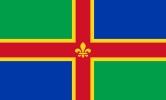
North Ormsby Priory was a Gilbertine priory in North Ormsby, Lincolnshire, England.

The Gilbertine Order of Canons Regular was founded around 1130 by Saint Gilbert in Sempringham, Lincolnshire, where Gilbert was the parish priest. It was the only completely English religious order and came to an end in the 16th century at the time of the Dissolution of the Monasteries. Modest Gilbertine revivals have taken place in the late 20th and early 21st centuries on three continents.

A priory is a monastery of men or women under religious vows that is headed by a prior or prioress. Priories may be houses of mendicant friars or nuns, or monasteries of monks or nuns. Houses of canons regular and canonesses regular also use this term, the alternative being "canonry".

North Ormsby is a village and civil parish in the East Lindsey district of Lincolnshire, England. It is situated approximately 7 miles (11 km) north-west from the market town of Louth.
It was founded by Gilbert son of Robert of Ormsby with the consent of his lord, William, earl of Albemarle. Robert was steward of William of Percy and gave the nuns the churches of Sth Elkington and Little Grimsby pasture, and land. The number of inmates was limited by Saint Gilbert to 100 nuns and lay sisters, and 50 canons and lay brothers. In 1534 the prior subscribed to the kings supremacy, and the house was surrendered by the prior and 5 canons and 9 nuns in 1538. The last prior was Christopher Cartwright. [1] The site is still visible as earthworks and is scheduled. [2]
Gilbert of Sempringham, CRSA, the founder of the Gilbertine Order, was the only Englishman to found a conventual order, mainly because the Abbot of Cîteaux declined his request to assist him in organising a group of women who wanted to live as nuns, living with lay brothers and sisters, in 1148. In the end he founded a double monastery of canons regular and nuns.

In archaeology, earthworks are artificial changes in land level, typically made from piles of artificially placed or sculpted rocks and soil. Earthworks can themselves be archaeological features, or they can show features beneath the surface.

In the United Kingdom, a scheduled monument is a "nationally important" archaeological site or historic building, given protection against unauthorised change.












